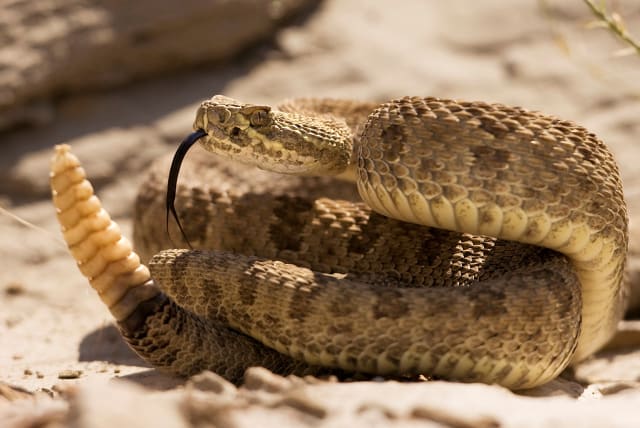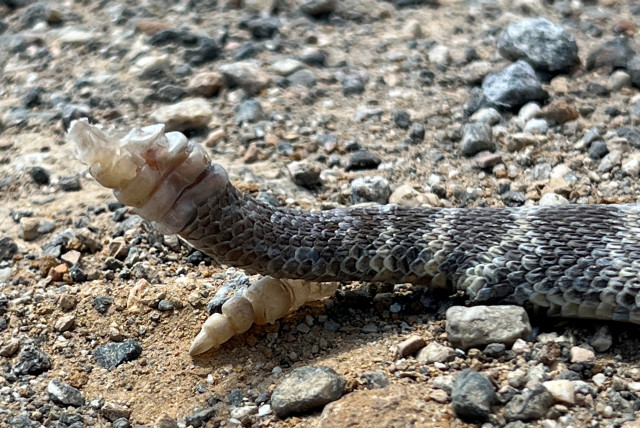Misunderstood rattlesnakes have a tender side, study finds

"People are eager to just chop their heads off," Hayes said, adding that "the animals are sentient, capable of emotions."
Warm and cuddly are adjectives that seldom spring to mind when one thinks of rattlesnakes.
But a new study from Loma Linda University near San Bernardino, California, may change that by showing that the venomous rattler appears to take comfort in being close to its own kind, much like people.
The research showed that the snakes seem to gain a sense of well-being when they wriggle into sort of a group hug with other rattlers, according to the study published this week the journal Frontiers in Ethology. The findings challenge the notion that reptiles are solitary hunters that display little in the way of complex social behavior.
The study is the work of Chelsea Martin, a Loma Linda doctoral student in biology, and her faculty adviser William Hayes, a professor of earth and biological sciences.
Animals find comfort amongst one another
Ethology, the study of animal behavior, has long recognized that birds and mammals, including humans, find comfort from being physically close to their own kind. Such proximity tends to make reptiles more relaxed, lowers their heart rates and reduces stress - not much different from people, Hayes said.
"Unfortunately for rattlesnakes and other lower vertebrates and invertebrates, we seldom give them that credit," Hayes said.
"People are eager to just chop their heads off," Hayes said, adding that "the animals are sentient, capable of emotions."
The idea for the study was hatched by Hayes in his off hours, when he is often called upon to wrangle rattlers caught by homeowners in the mountains of Southern California.
Hayes said he usually puts a captured snake in a bucket and carries it safely into the wild, with the creature typically rattling furiously all the way. But he said he noticed that when two or more snakes were in a bucket, the rattling tended to ease.
The calming effect when creatures are in close proximity with their own kind is called social buffering.
"It tells us that when they are with another snake it reduces their stress response," Martin said. "It has never been reported in reptiles before. It's something that humans do."
To measure stress levels in the snakes, Martin used a heart-rate monitor designed for humans.
"It lets us know as humans that, hey, we're not that different from these snakes," Martin said. "They are doing something we do."
Jerusalem Post Store
`; document.getElementById("linkPremium").innerHTML = cont; var divWithLink = document.getElementById("premium-link"); if (divWithLink !== null && divWithLink !== 'undefined') { divWithLink.style.border = "solid 1px #cb0f3e"; divWithLink.style.textAlign = "center"; divWithLink.style.marginBottom = "15px"; divWithLink.style.marginTop = "15px"; divWithLink.style.width = "100%"; divWithLink.style.backgroundColor = "#122952"; divWithLink.style.color = "#ffffff"; divWithLink.style.lineHeight = "1.5"; } } (function (v, i) { });

